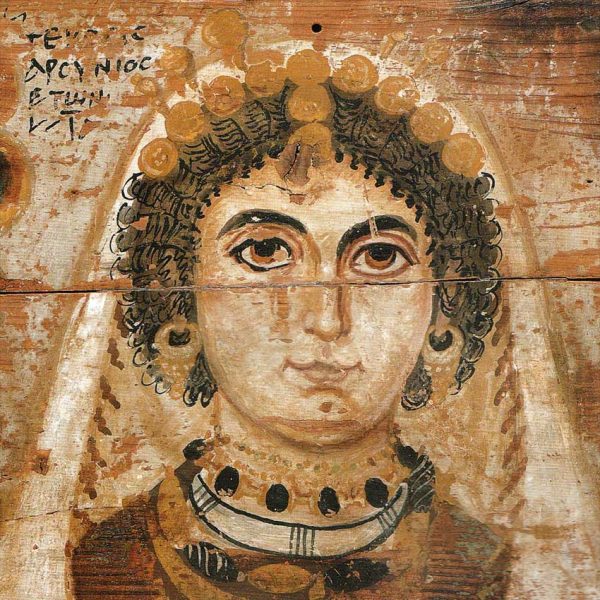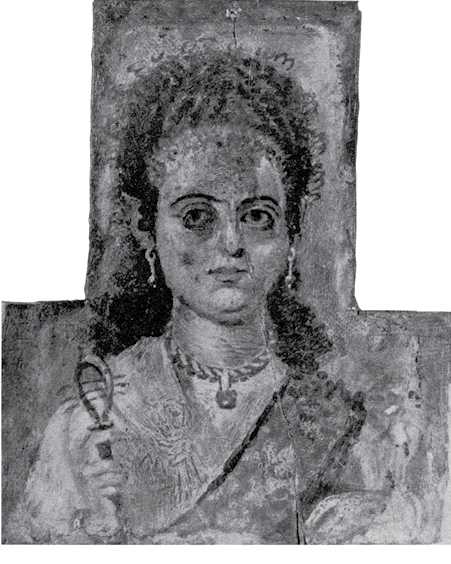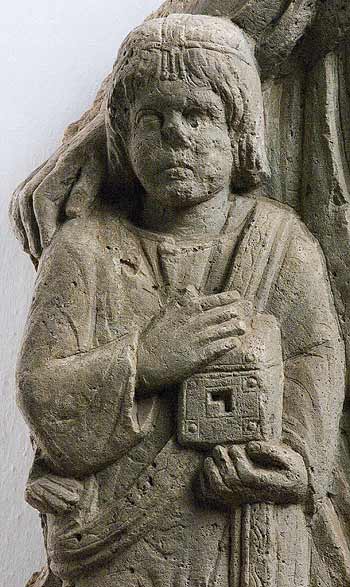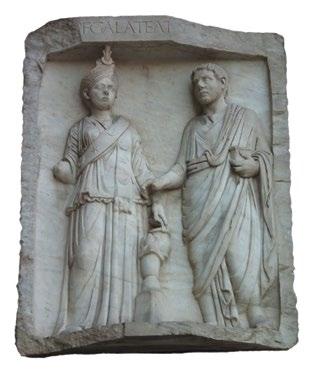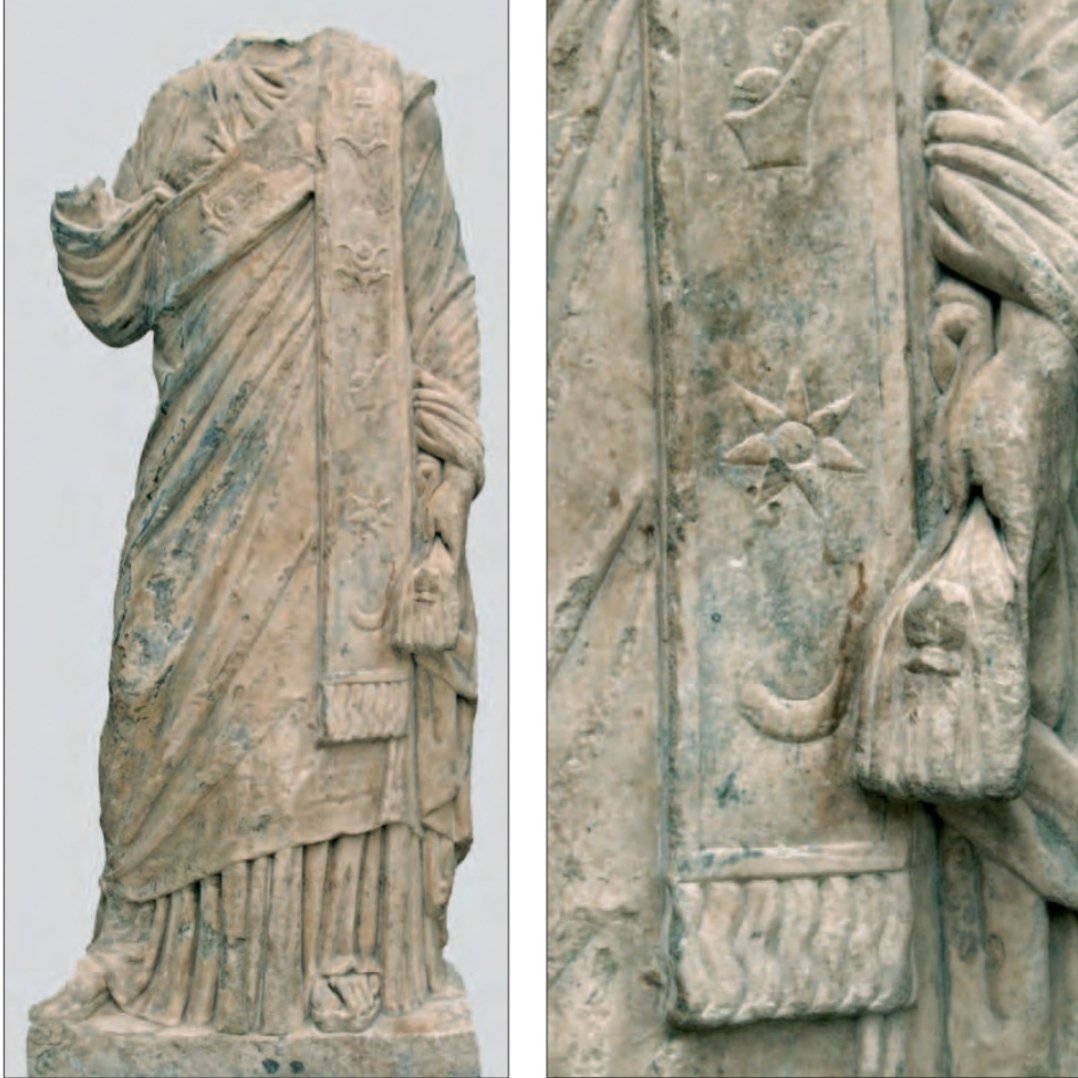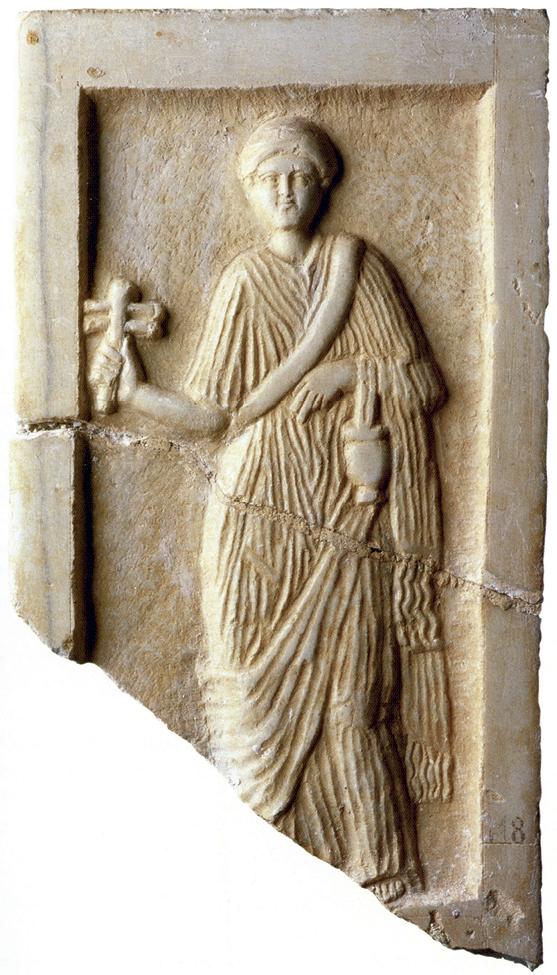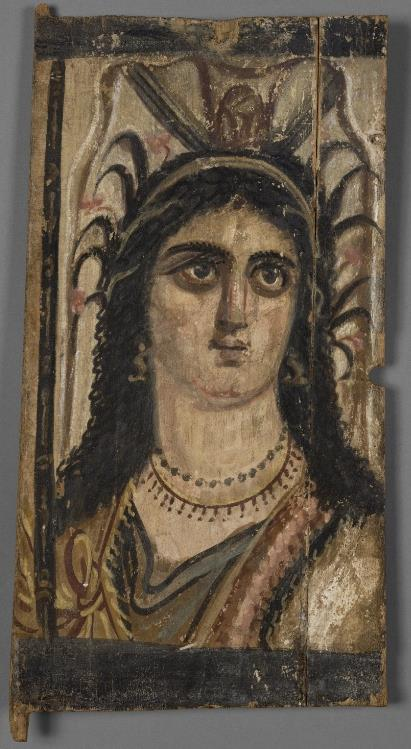
Fig. 6 : Stele of Hadea, Beroia. Beroia AM Λ160. ©Greek Ministry of Culture, Archaeological Receipts Fund
‘The Representation of Children on Classical and Hellenistic Tombstones from Ancient Macedonia’ Myrina Kalaitzi Academia.edu
“V. ALLAMANI-SOURI, republishes a stele with a funerary epigram for Hadea and a representation of a girl and her maid, Hermes, a child, and a hermaic stele (Beroia, c. 200, I.Beroia 391). The iconography (key, priestly crown) suggests that Hadea was a priestess, probably of Isis or Hekate/Ennodia.
in P. ADAM-VELENI (ed.), Thessaloniki, 2000, 489-493, tentatively interprets the object held by Hadea as a trident (a reference to Isis Pelagia?), and not as a key. P. CHRYSOSTOMOU, assumed that Hadea was a priestess of Ennodia and suggested identifying her mother with a priestess of Ennodia Hosia (J.Beroia 23). See also M.B. HATZOPOULOS, BE 1999, 341]. [AC]”
Epigraphic Bulletin for Greek Religion 1999
Angelos Chaniotis and Joannis Mylonopoulos
“EKM I 23. Priestly dedication to Enodia Hosia, 3rd cent. BC
Kynnana daughter of Epigenes, having served as priestess, (dedicated) the sacrificial hearth to Enodia Hosia.
Chrysostomou, Εν(ν)οδία 71, 135-138.
Cf. V. Allamani-Souri, in: Μνείας χάριν 21-22 n. 24 (on the priestess); Brocas-Deflassieux, Béroia 78 (on the sanctuary of Enodia); O. Palagia, in: Macedonian Legacies 204 (on the priestess); M. Youni, in: L’organisation matérielle 92 (on Enodia); Allamani-Souri, Επιτύμβιες στήλες και ανάγλυφα 95 (on the priestess); Parker, Greek Gods Abroad 91 (on the epithet Hosia).
For the cult of Enodia in Thessaly and Macedonia, see especially the monograph of Chrysostomou; cf. Chatzinikolaou, Λατρείες 117-125. For the proposed identification between the priestess and dedicant Kynnana with Kynnana mother of Hadea, see the commentary at EKM I 391, below.”
“EKM I 391. Epigram of Hadea, late 3rd cent. BC
The object held on Hadea’s left arm is correctly interpreted as a sceptre by Allamani-Souri, Kalaitzi and Palagia, and not as a distaff as in EKM I; the object on her right hand has been tentatively interpreted as a spindle (EKM I), a small trident (Allamani-Souri in: Μύρτος and Palagia) or a key (Chrysostomou and Allamani-Souri, in: Μνείας χάριν and Επιτύμβιες στήλες και ανάγλυφα); Kalaitzi merely describes its form and refrains from identifying it.
a) Hadea daughter of Kassandros.
b) To Hermes Chthonios.
c) Notice beneath me the grave of Hadea, whom the terrible Hades took hold of by disease while she was still a maiden, before her time to die; with her death she left forever great grief for her mother, Kynnana, who gave her birth, and great grief for Kassandros her father.
This fine and characteristic product of the Beroian Hellenistic relief workshops has received a number of different interpretations. Chrysostomou, Allamani-Souri and Kalaitzi (in: L’enfant et la mort dans l’Antiquité) identified the deceased as a priestess holding a scepter; Chrysostomou, who identifies her with a daughter of Kynanna, priestess of Enodia (EKM I 23, above), assumes that Hadea is also a priestess of the same goddess; Allamani-Souri oscillates between Enodia and Isis Pelagia (contra, for the latter deity, Bull. 1999, 341), due to the objects portrayed in the relief.
Palagia (in: Macedonian Legacies) proceeded to a radical reinterpretation of the stele:
it is dated to the late 4th cent. BC; the figure on the left is identified not with Hadea, but with the earliest personified representation of Macedonia (with the parasol representing an “Achaemenid symbol of authority, reintroduced by the Macedonians in that spate of Orientalism that engulfed Macedonia after Alexander’s conquest of the East”); Hadea is identified with the young girl on the right, holding a sacred book of initiation to the Orphic mysteries; Kynnana is identified to an otherwise unattested daughter of Amyntas
IV and Kynnana, Alexander’s sister; she was presumably married to king Kassandros. All
this is summarily dismissed by Chaniotis (SEG LIX) and Kuzmin, on good –archaeological,
religious and historical– grounds.”
Source: A Supplement to Ἐπιγραφὲς Κάτω Μακεδονίας A’: Ἐπιγραφὲς Βέροιας https://www.anavathmis.eu

